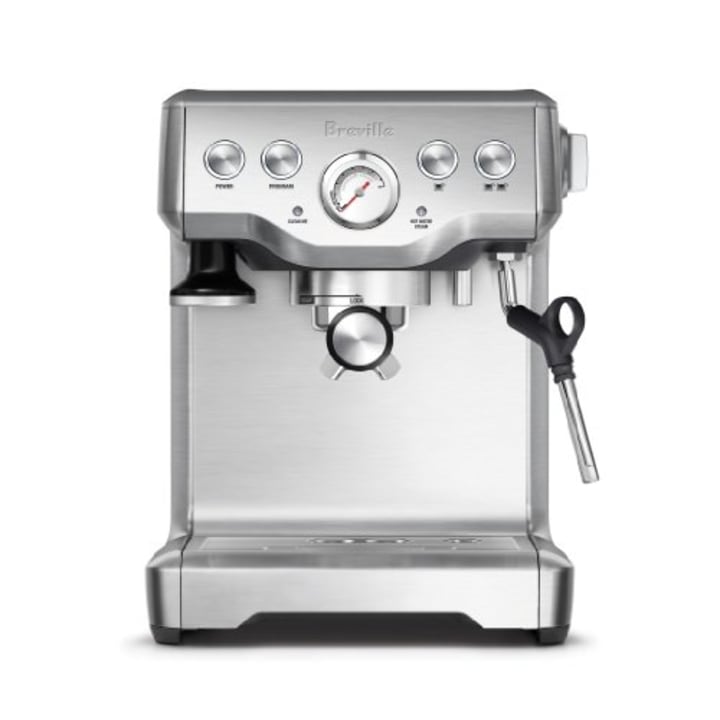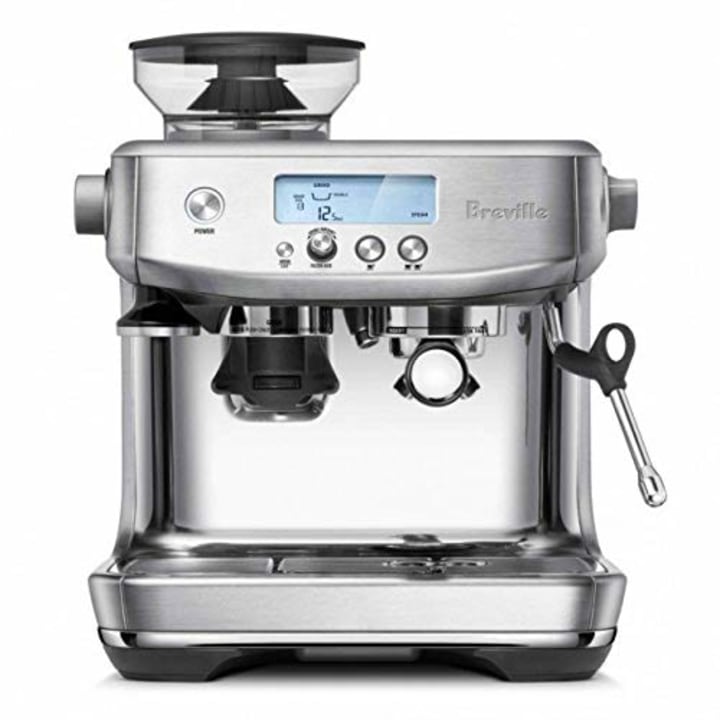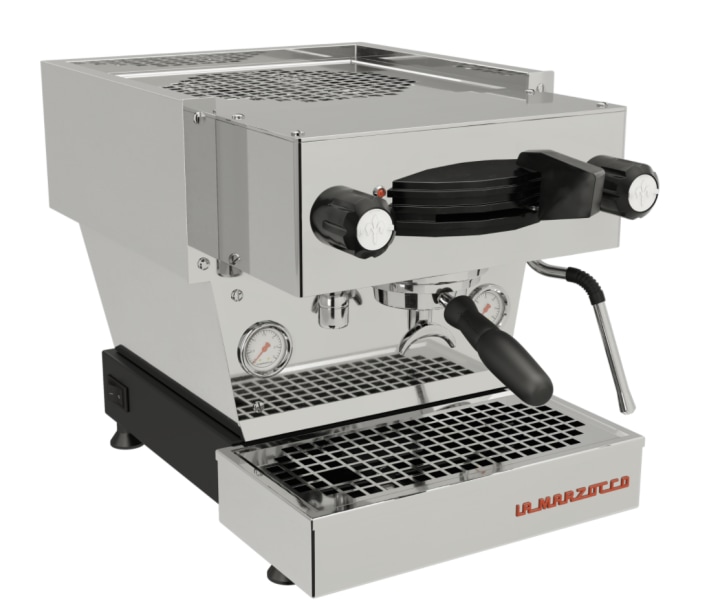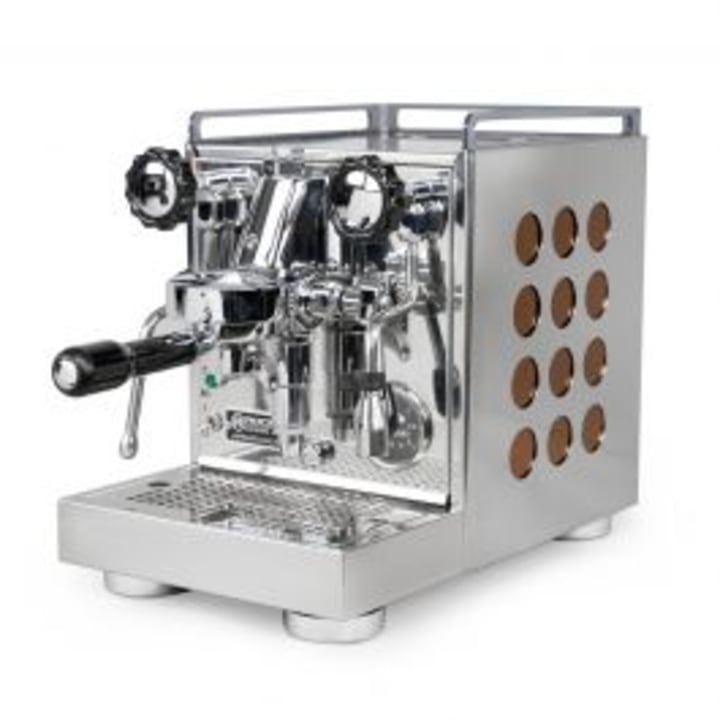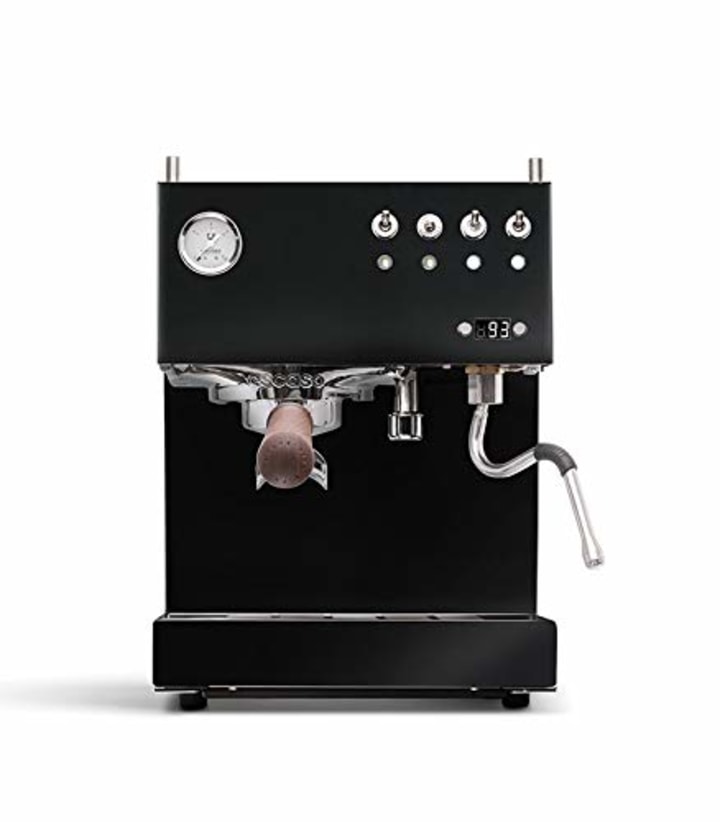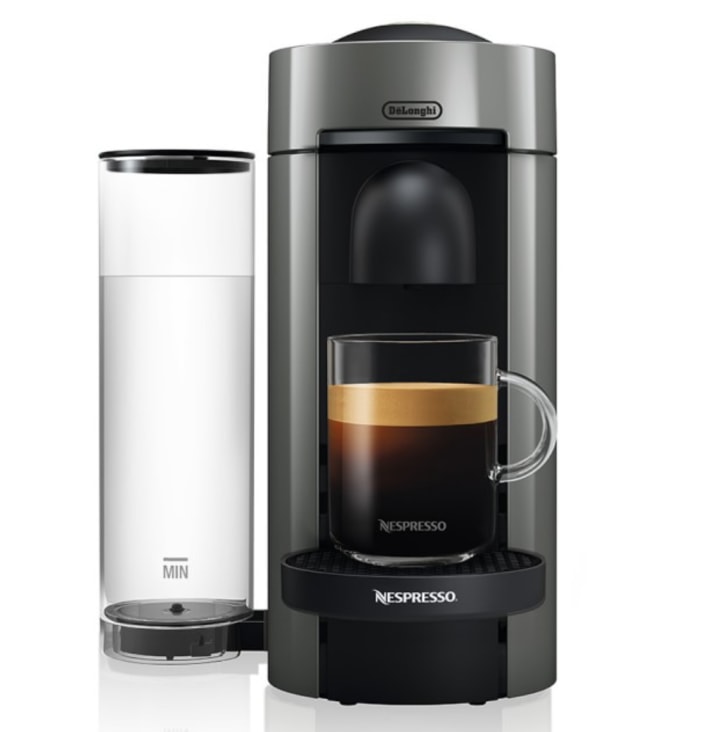According to a 2020 survey from the National Coffee Association (NCA), a staggering seven in 10 Americans drink coffee every week, and 62 percent drink coffee every single day. There are plenty of ways to consume the brewed beverage — hot, cold, over ice, blended — and many prefer it in the form of an espresso, which uses a pressurized brewing method to produce a small, concentrated shot of coffee. Espressos are a bit more complicated to make than a pot of coffee — while some consumers equate the espresso with a simple capsule that goes into their Nespresso, more experienced coffee connoisseurs typically know that making an espresso is an art (and leave it to their local barista).
The good news is that with the right espresso machine, you can learn how to perfect the art of the espresso from home and start dosing (grinding the proper amount of beans for your machine), tamping (compressing the coffee grinds) and extracting (turning your beans into beautiful liquid gold). If you’re in the market for an espresso maker, we spoke to coffee experts about how to shop for the right one and the different types of espresso machines out there.
What are the different types of espresso machines?
There are many types of espresso machines — they can be bucketed by what mechanism they use to produce pressure, a necessary component in the creation of an espresso.
Pump-driven espresso machines
These are the most common types of espresso machine on the market. They use an electronic pump to send hot water through the coffee beans at the ideal pressure — around 9 bars. There are different types of pump-driven machines, and each of them gives the user a certain amount of manual control over the espresso-making process. Most pump machines can be put into one of four categories: automatic, semi-automatic, manual or capsule.
- An automatic espresso machine like the Jura X8 does most of the work for you. “Some automatic machines can grind, dose, tamp, extract espresso and steam milk to the perfect temperature, all at the touch of a button,” explained Jessica Rodriguez, certifications program manager for the Specialty Coffee Association who manages and develops the Certified Home Brewer and Commercial Espresso Machine programs. Michael Phillips, Blue Bottle Coffee’s director of coffee culture, noted that “if you don’t have the time or patience to learn the craft of working with espresso and milk, [an automatic machine] is probably your best option.”
- A semi-automatic espresso machine like the Calphalon Temp iQ is what you will most often find in cafes, according to Phillips. These machines require you to grind, dose, tamp and steam on your own, plus activate and deactivate the brew pump manually. “The user has more control over preparing the espresso,” Rodriguez noted. Because they are more advanced and produce higher-quality results, semi-automatic machines are typically more expensive, too, but Phillips said this is “what you want” if you “want to achieve the highest manifestation of great cafe-style espresso and milk drinks.”
- A manual espresso machine like the Classic Flair Espresso Maker gives you pretty much complete control over your brewing experience. As such, these are some of the most complicated machines to operate, and they “barely exist anymore,” according to Graham Peeples, Director of Beverage at Methodical Coffee.
- A capsule espresso machine like the Lavazza BLUE is the “pinnacle of ease of use and speed,” according to Phillips, though he noted that they tend to “fall behind on quality.” Peeples explained that these machines require you to simply load a capsule of coffee and press a button to pump pressurized hot water through the capsule and into your cup. “You lose a lot of control over the quality of the shot itself,” he said. One of the most common capsule machine makers is Nespresso.
Steam-driven espresso machines
According to a spokesperson for the NCA, steam-driven machines like the Capresso Steam PRO and the SOWTECH Espresso Machine boil water to create steam that is then used to heat the espresso grounds. They typically produce less pressure than other espresso machines — around 1.5 bars, compared to the ideal 9 bars. Though these machines have a low pressure, the NCA noted that they are “a budget-friendly, easy-to-clean option.”
Manual-lever driven espresso machines
Manual lever-driven machines like the Elektra Microcasa Lever Espresso Machine “use the operator’s physical force to pull the shot and offer the most control over pressure, flow rate and infusion times,” according to the NCA. This type of machine is often preferred by more experienced espresso makers.
Best espresso machines
In general, Phillips noted that “a good machine will not have a lot of reviews talking about it breaking down after a year.” He added that a good machine will have “stable pressure and temperature along with the ability to steam at least 12 ounces of milk inside of 30 seconds.”
Below, we rounded up some automatic, semi-automatic and capsule espresso machines based on expert recommendations across various price points. The experts we consulted advised against home brewers buying steam-driven and manual lever-driven machines due to the lower pressure and complexity, respectively, but if you want to explore that route, here are some guides to check out from Coffee Brewing Methods (on steam machines) and Coffee or Bust (on manual lever-driven machines).
Best overall, affordable espresso machine: Breville
Breville Infuser
Both Peeples and Phillips highlighted Breville as one of the best espresso machine brands on the market. At under $600, Peeples specifically noted that the semi-automatic Breville Infuser is one of the best budget options for home brewers. The machine allows you to control the volume of each of your pours, plus it has digital PID temperature control and a pressure gauge that helps you optimize your extraction.
Best espresso machine with built-in grinder: Breville
Breville Barista Pro
Another good machine from Breville is the Barista Pro. According to Peeples, this is a “really popular choice that seems to be a good option for people looking for an all-in-one solution.” This automatic espresso machine is built with Breville’s ThermoJet heating system, designed to hit the ideal extraction temperature in 3 seconds. It comes in several colors, including Damson Blue, Royal Champagne and Black Truffle.
Best espresso machine for beginners: Gaggia
Gaggia Classic
Peeples highlighted the Gaggia Classic as a “no-frills machine that will get the job done,” noting that it’s also relatively affordable. This semi-automatic machine has a rapid heating boiler, 3-way solenoid valve and 58-millimeter chrome-plated brass portafilter. It also has a built-in commercial steam wand to produce foamy, frothy milk.
Best espresso machine for experienced baristas: La Marzocco
La Marzocco Linea Mini
La Marzocco is the brand that Blue Bottle uses in all of its stores, which is why Phillips called it “the working barista’s choice.” The semi-automatic Linea Mini is modeled after La Marzocco’s Linea Classic, which the brand says is popular among professional baristas. With the La Marzocco app, you can turn the machine on or off, set the boiler temperature, enable pre-brewing and more. Though this machine is substantially pricier, Phillips noted that “the build quality is very high, it has stable temperature and pressure, looks great in a kitchen and just works.” Peeples added that with this machine, “you’ll have professional-level quality on your hands with nothing to worry about.”
Best affordable espresso machine for experienced baristas: Rocket
Rocket Espresso Appartmento
If the Linea Mini’s price tag is out of your range, Peeples suggested checking out anything from Rocket. The Rocket Espresso Appartmento is still certainly an investment but this semi-automatic machine features a heat exchange boiler and a heated group head to help heat the water in your machine to the optimal temperature and steam milk while you pull your espresso.
Best-looking, high-end espresso machine: Ascato Steel
Ascaso Steel PID Programmable Machine
According to Peeples, Ascaso Steel machines “look incredible and have all the features you’d want in a home machine.” The Steel DUO PID features a 58-millimeter portafilter and dual thermoblock insulation that heats water quickly and ensures continuous steam. With the PID temperature control on this machine, you can also control the temperature of your espresso in one-degree increments.
Best capsule espresso machine: Nespresso
Nespresso VertuoPlus
If you’re looking for convenience over everything, the Nespresso VertuoPlus is a great option. Shopping editor Gideon Grudo previously noted that this machine is one of his favorite coffee makers since “your coffee is entirely in your hands and won’t require too much work if you don’t want it to.” In order to use this machine, you need to buy pods directly from Nespresso. You also need to either buy the frother separately or as a bundle if it’s part of your preferred espresso.
What to look for when shopping for an espresso machine
Espresso machines are composed of several parts, all of which determine the temperature, flavor profile, strength and consistency of your coffee. Here are some of the things the experts we consulted said to look for while shopping for your espresso maker:
How big is the portafilter?
The portafilter is the spoon-like device that holds the coffee grounds. Peeples said the size of the portafilter is “a big thing to consider” — the standard size for a portafilter is 58 millimeters and this size “will make upgrading your portafilter and its basket and finding accessories like distribution tools and tamps a lot easier,” he said.
How many boilers does the machine have?
Most espresso machines are either powered by a single boiler or dual boilers. Peeples noted that “getting an espresso machine with dual boilers [where the steam wand and the group head have their own boilers] is very helpful because you won’t have to wait on the machine to catch up when pulling shots of espresso and steaming milk at the same time.” These dual boiler machines are typically more expensive. Single boiler machines, meanwhile, use the same boiler for the steam wand and the group head, so after you pull a shot of espresso, you’ll have to wait for the machine to build pressure before you can steam milk.
How is the temperature on the machine controlled?
All of the experts we spoke to said that a good machine will have a stable temperature. Many higher-end espresso machines use PIDs — or Proportional, Integral, Derivative controllers — to allow you to control the temperature of your espresso down to the degree. Peeples noted that this is a helpful feature as it “keeps your water at a steady temperature instead of letting it fluctuate.” If you have this option, he suggested maintaining a temperature between 195 and 205 degrees Fahrenheit.
Does the machine come with a built-in grinder?
“Without a good grinder, an espresso machine is just a paperweight,” said Phillips. “The quality of your grinder will be the limiting factor for the quality of your espresso set-up.” He said you should look for a grinder designed specifically for espresso with a “step-less” grind adjustment that allows you to make “very tiny adjustments” to your grind size. Some machines come with built-in grinders — but while these are convenient, Phillips warned that “they [often] break down or get to the point of performing poorly relatively quickly.”
Catch up on the latest from NBC News Shopping guides and recommendations and download the NBC News app for full coverage of the coronavirus outbreak.
Source: | This article originally belongs to Nbcnews.com



